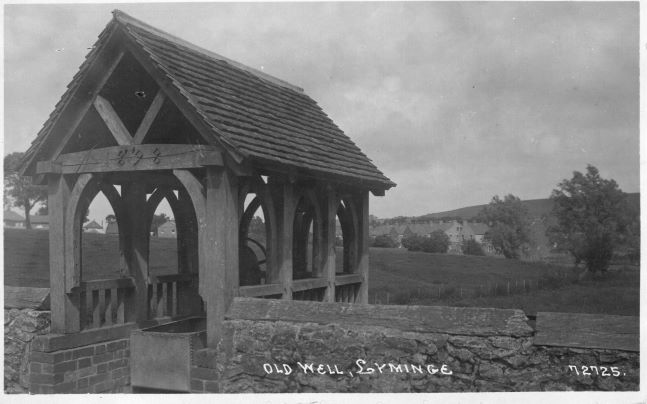St Eadburg's Well is the site of a perpetual spring that flows out of the chalk. This is generally considered to be the main source of The Nailbourne, the chalk stream that flows northwards along the Elham Valley, joining the Little Stour near Littlebourne and then the Great Stour at Pluck's Gutter, which then flows into the sea at Sandwich. Nailbourne (and also Winterbourne) is a common name for the seasonal chalk streams across the Downs that dry up, in whole or in part, for periods of time during the year when the water-table drops. Parts of the Lyminge Nailbourne further north are often without water for long periods, but St Eadburg's Well never seems to run dry.
This spring was the public source of water for the central part of Lyminge around the parish church until mains water arrived in 1905. Many houses had private wells, but everyone else had to rely upon the spring. The current well-house, modelled on the church porch, was built in 1898, replacing an earlier structure. Water flowing out of the chalk is collected in a reservoir at the base of the well-house before it flows out into the stream. A pump mounted in the upper storey of the well-house at road level allowed water to be drawn up from this reservoir and collected in buckets. The galvanised iron tank, which is long-since removed, may have been intended more as a horse trough, or as a source for water that was not needed for drinking.
 The well house showing the galvanised water tank
The well house showing the galvanised water tank